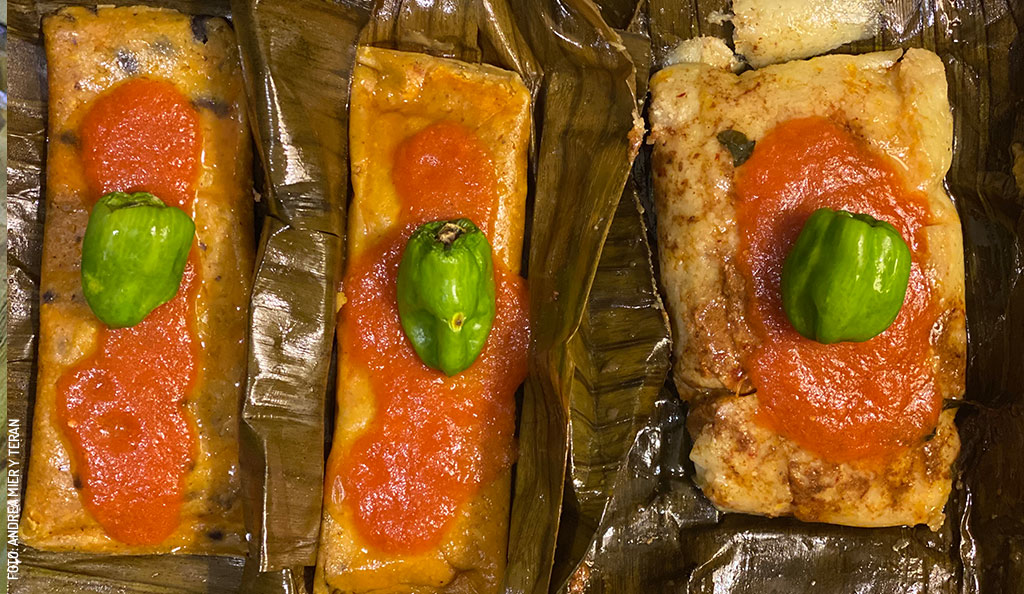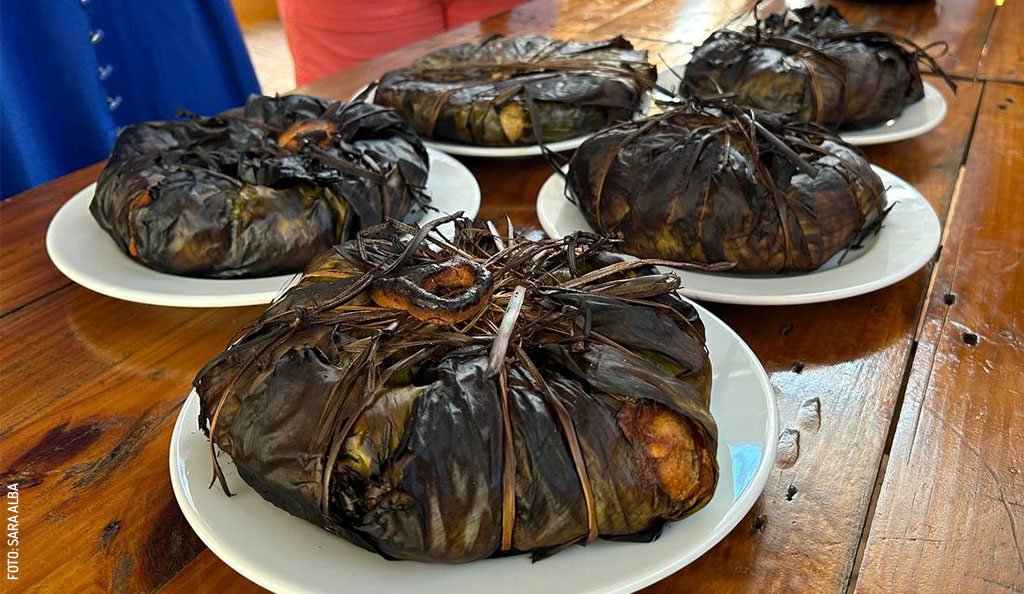
Mukbilpollo, the Ritual of Melancholy
Is there anything more delicious and profound than memory? That's what Mukbilpollo, or Pib, is: a memory buried in the red earth of Yucatán and transformed into a crispy outcome; into a total, devoted, and sincere dance. Why is this so special? You see, every ritual marks a before and an after in our lives, and eating Mukbilpollo, the traditional dish of Janal Pixan, is a ritual.
 Some people consider December and January to be the end and the beginning of the year, respectively. But it doesn’t feel like that to me. For me, the crunch of a Mukbilpollo —which is the meal we share with those who are on the other side of the threshold— is the true closing of one cycle to open another. The supreme delicacy of the season is just a crust of dough and meat cooked in a conventional or underground oven (Pib), but it lies at the center of a unique, unrepeatable, and special experience.
Some people consider December and January to be the end and the beginning of the year, respectively. But it doesn’t feel like that to me. For me, the crunch of a Mukbilpollo —which is the meal we share with those who are on the other side of the threshold— is the true closing of one cycle to open another. The supreme delicacy of the season is just a crust of dough and meat cooked in a conventional or underground oven (Pib), but it lies at the center of a unique, unrepeatable, and special experience.
You might expect the dish most longed for by a Yucateco who finds themselves away from home to be Cochinita Pibil. Surprisingly, though, if you have the opportunity to ask some, more often than not they'll answer that it's Mukbilpollo. This isn't solely due to its delicious taste but also because of the profound emotional resonance it carries.
Today, you can savor Pib all year round, readily found in various tamale shops across Mérida, Campeche, and even in the heartland of the state. But until recently, eating Pib was a privilege reserved exclusively for November. This meant that there were Yucatecos living in México City or abroad, who would travel home only to eat Pibes. Yes, you read that right.
And despite its current widespread availability, these trips still take place. Entire families gather around this dish, accompanied by a photo of a loved one no longer with us, and a flickering candle. The fusion of life and something more dwells in those who experience the taste of this dish, sprinkled with toasted banana leaves.
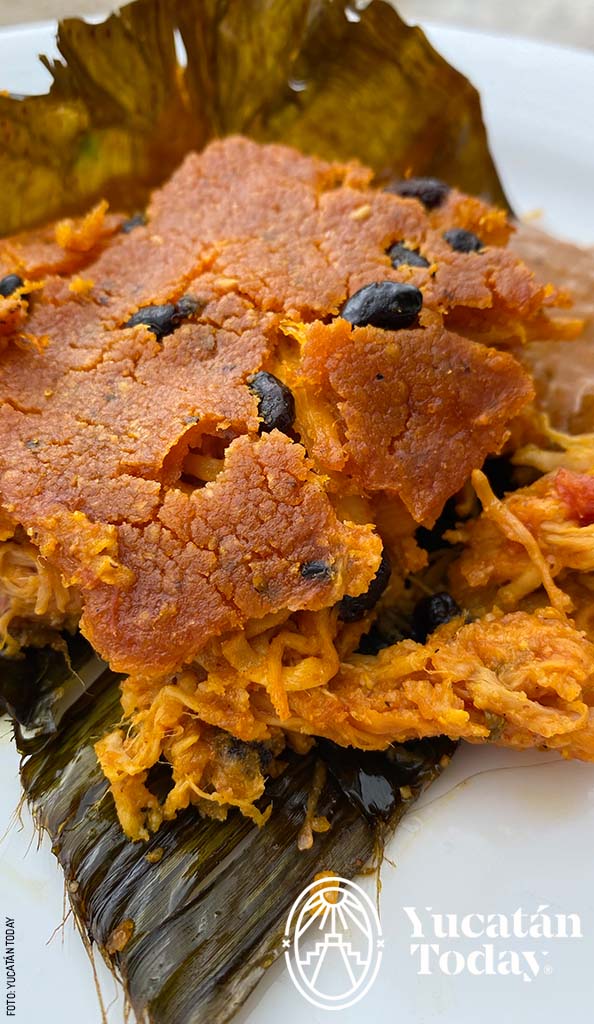 Here's another question: Is there anything more serious in life than death? When the two come together like two lovers in a Manzanero song, they can take us to that place where the essence of life is discovered. And when you bite into a crispy Mukbilpollo, the colors inside you become unleashed. It can be eaten hot, warm, and cold. The latter is usually after several days have passed, and we've temporarily given up on the scale for a few days.
Here's another question: Is there anything more serious in life than death? When the two come together like two lovers in a Manzanero song, they can take us to that place where the essence of life is discovered. And when you bite into a crispy Mukbilpollo, the colors inside you become unleashed. It can be eaten hot, warm, and cold. The latter is usually after several days have passed, and we've temporarily given up on the scale for a few days.
The Pib or Mukbilpollo is, in itself, an absolute syncretism: the union of Maya faith and culture with Spanish influence. Corn, the basis of the tamal, makes it essentially pre-Hispanic, but the pork lard (or its meat, if those are the chosen ingredients in your home) also makes it a food with overseas influence. This is how, in the Pib, Yucatecos recognize our roots, our origin. Even the "Chel" (blond) among the Chel primarily feels Maya when taking a bite from the tray.
Mukbilpollo is not just consumed; it's bitten, absorbed, and felt. It dwells in the palate and the heart. This delicacy arrives only once a year to remind us that, while usually the way to a person’s heart is through the stomach, the reverse is also possible.
Photography by Elizabeth Llanes, Sara Alba and Yucatán Today for use in Yucatán Today.
First published in Yucatán Today print and digital magazine no. 420, in October 2023.
In love with Yucatán? Get the best of Yucatán Today delivered to your inbox.
Related articles
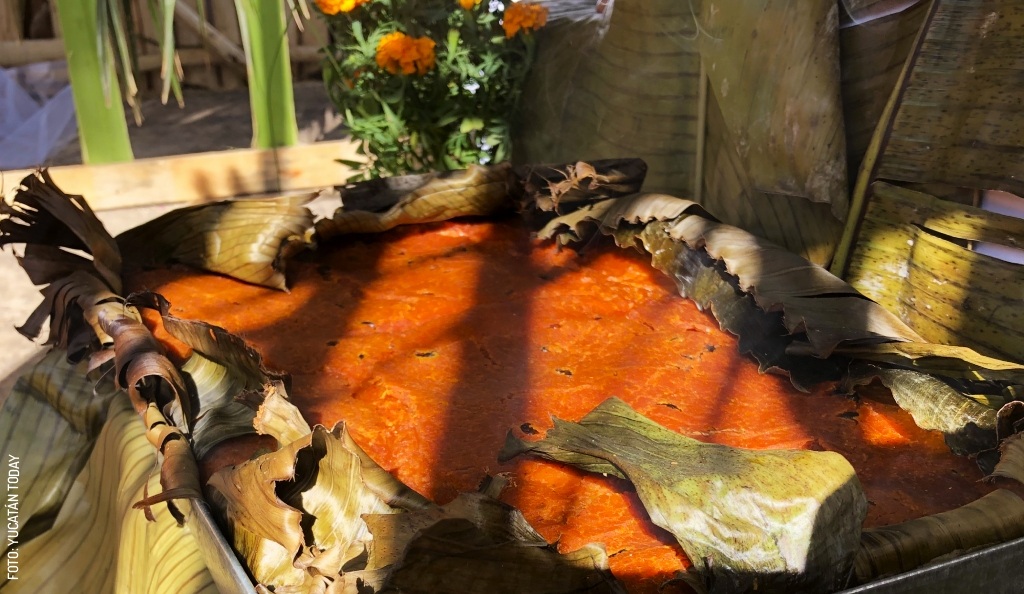
All about Pib, a traditional Yucatecan Day of the Dead dish
Everything there is to know about this delicious Yucatecan dish, a staple of the Janal Pixan season: its meaning, ingredients, history, and more.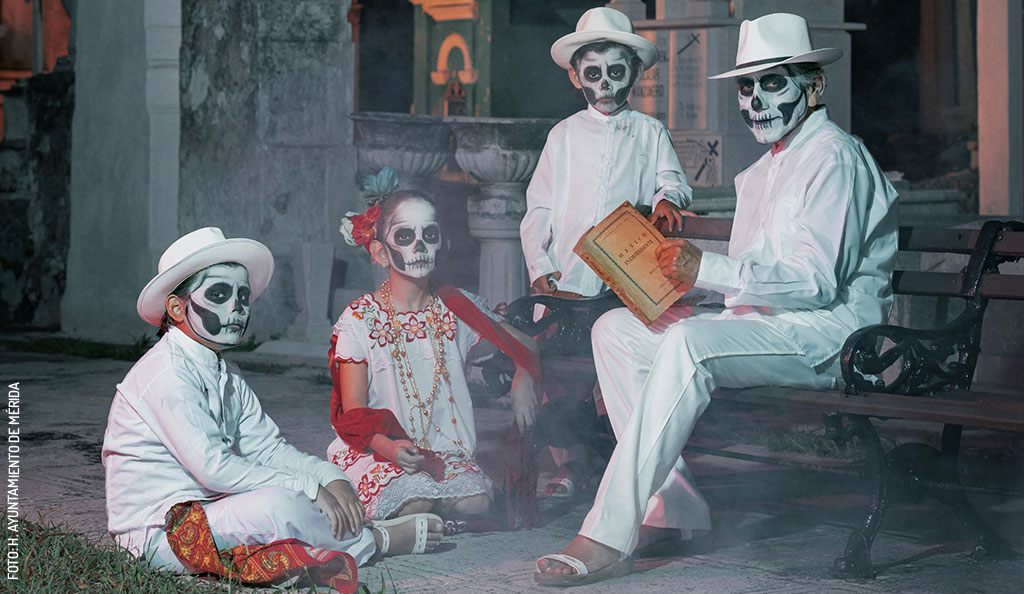
The 2025 Festival of Souls: A Living Tradition in Mérida
From October 25 to November 2, Mérida prepares processions of souls, fairs, art exhibits and plenty of Día de Muertos-related activities!